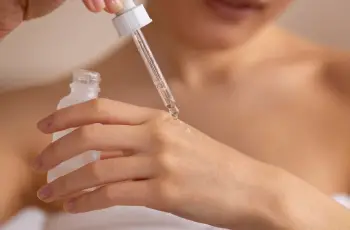
What are the benefits of polyhydroxy acids (PHAs) for skin?
If you’re into skincare, your routine probably includes a range of active ingredients, starting with AHAs like glycolic acid, BHAs, retinol, and hyaluronic acid. Sure, it can be a little confusing at times, but once you take the time to find a routine that works for you and your skin, there’s no going back.
This brings me to one of the latest beauty buzzwords that has been popular over the last year: PHAs, short for polyhydroxy acids. Yes, there’s a new group of acids! But how exactly are these acids different from all the other acids we’ve used before? And what are their benefits for the skin? Today we know a little more about them. Who knows, maybe they’re what you’ve been missing from your routine!
What are polyhydroxy acids?
Polyhydroxy acids are chemical peels that have similar properties to alpha hydroxy acids (AHAs) and beta hydroxy acids (BHAs), but are considered second-generation facial acids. The most common are galactosyl, lactobionic, and gluconolactone acids. PHAs work on the outer layer of the skin, removing dead skin cells that build up on the surface, helping to restore the skin’s overall tone, texture, and radiance. By removing dead skin cells, you’ll find that other skincare products, such as serums, work better and more quickly when applied to your skin. PHAs are rich in antioxidants that can support the production of elastin and collagen in your skin. They also fight free radical damage and premature skin aging.
What do PHAs do for your skin?
If you find that your skin is too sensitive to incorporate other chemical peels into your routine, PHAs may be the puzzle piece you’re missing! Known for their gentle approach to skin exfoliation, many people with sensitive or very dry skin benefit from skincare products containing PHAs. The main benefits of polyhydroxy acids are:
Gentle enough for sensitive and very dry skin types
Can remove dead skin cells from the face that can make the complexion appear dull, gray, and accompanied by flaky skin patches
Break down the skin cell barrier, allowing other products like serums and essential oils to penetrate the skin faster and more effectively
May help stimulate the production of collagen and elastin in the skin, which can have anti-aging benefits
Rich in antioxidants, which can help fight free radical damage like sun exposure, pollution, and other environmental aggressors
Gentle enough not to cause photosensitivity, which can make the skin susceptible to UV damage
Contains humectants that help lock in moisture in the skin.
These are just some of the main skin benefits you’ll notice when using PHAs. AHAs and BHAs have many similarities, but there are some important and powerful differences between these skin ingredients, which I’ll explain now.
How do PHAs differ from AHAs and BHAs?
The main difference between PHAs, compared to AHAs and BHAs, is their molecular size. Unlike some popular acids such as salicylic and glycolic acids, PHAs have a very large molecular size, which means they are unable to penetrate deeply into the skin. As PHAs act on the outer layers of the skin, they do not cause irritation or reactions, which are often side effects of AHAs and BHAs, especially when used on overly sensitive skin types. As PHAs work without damaging the deeper layers, you will also find that sun exposure does not cause the same degree of skin damage that often occurs when using AHAs and BHAs. However, we recommend applying SPF 30 daily to ensure the skin is fully protected from UV damage and signs of premature ageing.
If you want to learn more about how other chemical peels work on the skin, you can read our guide to the benefits of AHAs and BHAs in skincare.
How often should you use PHAs?
Although PHAs are considered gentle giants, they are still chemical exfoliating acids and should be incorporated into your daily routine in the right way. If your skin type is particularly sensitive, it is recommended to perform a patch test 24 hours after consulting your GP or dermatologist. First, try using the PHA formula that works best for your daily routine 3 times a week, such as: B. face wash, toner, serum, etc. Once your skin has developed tolerance, you can use it daily, if there are no signs of irritation. Of course, remember not to use exfoliants too often, as this can strip your skin of important oils.
Oily and acne-prone skin types may benefit from switching out chemical exfoliating toners for toners containing PHAs, as it is gentle and has healing properties that can maintain the clarity of your complexion without being too harsh on the skin. You should also be careful when mixing PHAs with other more potent ingredients, such as retinol, AHAs, and BHAs, to avoid over-irritating the skin and causing excess sebum production, which can cause an imbalance in the skin barrier. This imbalance can lead to spots, signs of aging, uneven skin tone, and other common skin issues. Once you have the best blend of ingredients, you’ll find that your skin really does look its best.
Is PHA right for my skin?
As mentioned before, sensitive skin types really benefit from PHAs because the larger molecule size allows for gentle exfoliation and you’ll find them to be a great alternative to the more potent AHAs and BHAs. Very dry, flaky and dehydrated skin types will also find that the hydrating properties of PHAs help draw moisture from the environment and lock it into the skin, keeping it balanced and calm. Issues with eczema and rosacea flare-ups are also known to be treated with the help of polyhydroxy acids. If you’re unsure of your exact skin type, check out our guide to the 4 most common skin types on our blog.
It’s pretty remarkable how many benefits PHAs offer and how they help all skin types. This is a very rare find for an ingredient in skincare, especially chemical peels. One wonders how anyone could live their daily lives without them.


